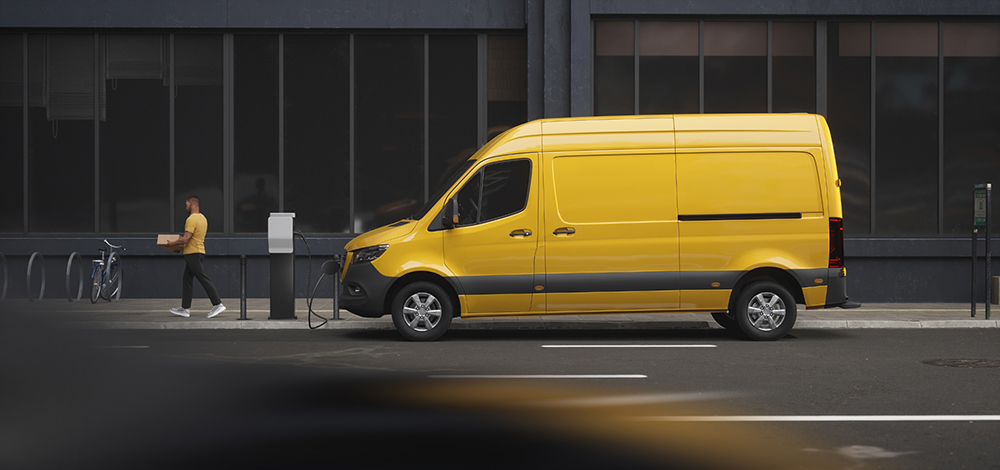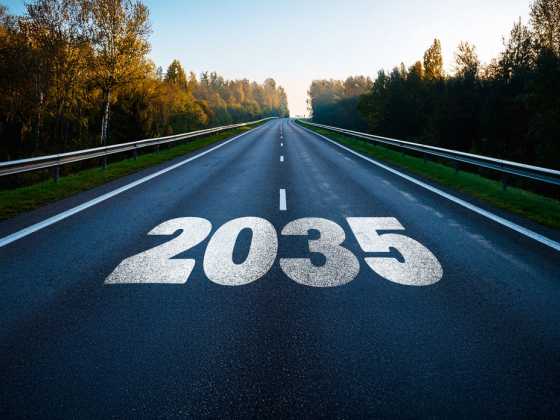Insight into electrifying light commercial vehicles

Logistics UK comments on the challenges faced by van operators when switching to electric vehicles, and highlights the need for the public charging network to accommodate commercial vehicles of all sizes
Government’s decision to delay the ban on the sale of new diesel and petrol cars and vans from 2030 to 2035 reached global headlines when announced in September.
Logistics UK has long-since highlighted how the lack of certainty from government on policies to enable a rapid transition to alternatively fuelled vehicles is a barrier to uptake and private sector investment, and this announcement builds on that uncertainty. In the view of Logistics UK, rather than pushing back decarbonisation deadlines, government should instead be making progress on the energy infrastructure and incentives businesses need to work towards reaching net zero.
Charging infrastructure
A practical and efficient charging network is critical for logistics operators. There were a total of 37,055 public electric chargepoints recorded in the UK as of January 2023. To meet the 300,000 by 2030 target set by the Department for Transport (DfT), monthly installations would have needed to rise by 288 per cent since January. However, figures from DfT show that as of 1 July 2023, there were 44,020 public electric vehicle chargepoints available in the UK – an overall percentage increase of 19 per cent since January. While this is strong growth, if only 7,000 chargepoints continue to be installed every six months, the UK will have only half the targeted amount of public chargepoints by 2030 and continued growth is therefore essential.
In May 2023 Logistics UK published its EV report which noted that 62 per cent of all its survey respondents stated they plan to have decarbonised their van fleets by 2030. Therefore, despite the delay in banning the sale of new diesel and petrol cars and vans, Logistics UK continues to call for an accelerated rollout of public infrastructure that also ensures suitability for commercial vehicles.
Further analysis of existing public chargepoints also shows that the most urban areas in England and Wales have almost three times as many public chargepoints per person as the least urban areas. While rural and urban in this instance is based on population density, it is important to note that this is only one measure of rurality; other factors such as building development and transport links also define how urban an area is.
Range issues
Vehicle mileage range is a key concern for van operators, with electric vehicles typically running on a lower mileage range than petrol or diesel vehicles. Often, urban areas are well suited to the use of electric vans due to the density of demand with multiple deliveries often for the same postcode area. For this, vans act as a mobile warehouse in which the driver may be parked up for long periods of time, however in rural areas, drivers tend to travel longer distances between deliveries.
Additionally, urban areas are increasingly considering greater use of micro consolidation centres to reduce the distance travelled by drivers however, rural areas may rely on larger warehouses that are further spaced out. The increase in online retail and subsequent demand for next-day delivery also plays an important factor, especially within rural areas. Previously, logistics companies would carefully consolidate multiple orders to prevent travelling back and forth between locations, however the demand for fast – including next or same day delivery – can result in less efficient operations and higher total vehicle activity.
As a result of the longer distances travelled, and the shorter milage range on electric vehicles compared to conventionally fuelled vehicles, increasing the number of public electric chargepoints in rural areas is vital. Additionally, Logistics UK’s EV report highlighted the difficulties operators are facing UK-wide in finding available, and usable, chargepoint spaces with many encountering broken or inoperable chargers, or issues surrounding their suitability for commercial vehicles. Logistics UK continues to urge government for an EV charging and refuelling infrastructure roadmap designed in collaboration with business to work for logistics vehicles, backed with clear guidance and incentives for local authorities.
As part of the roadmap, consideration for rapid chargers will be vital. With van drivers – especially in rural areas – travelling distances that may exceed their mileage range throughout their delivery schedule, rapid charging facilities are vital to ensure the vehicles are not removed from the road from significant periods of time, reducing efficiency. Of the 44,020 public electric vehicle charging devices available in the UK (as of 1 July 2023), 8,461 of these are rapid charging devices. This is an encouraging 814 increase compared to 1 April 2023, however – in the view of Logistics UK – progress on the installations must be accelerated to ensure consumer demand can continue to be met efficiently.
Overall, despite the ban on the sale of new diesel and petrol cars and vans being pushed back to 2035, electric vans continue to play an important role as the UK heads towards net zero by 2050. While progress of electric vehicle chargepoint installation is needed across the UK in both urban and rural areas, it is vital that given the distances travelled and the current lack of public chargepoints compared to urban, particular consideration is now given to increasing the charging infrastructure in rural areas as part of an EV charging and refuelling infrastructure roadmap.






